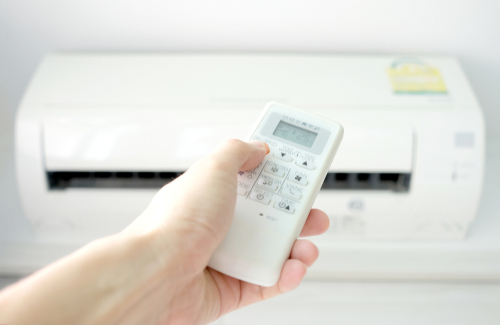
What Is The Life Span Of Aircon Pipe?
September 14, 2019
Is Cheap Aircon Servicing Really Good?
September 14, 2019Pros & Cons Of Aircon Steaming

Steam heat is a conventional heating system, which is common in buildings and homes constructed before the 1950s. It involves heating water in a steam boiler until it attains its boiling point of 212 degrees Fahrenheit. It works on the fundamental principle that as the water turns to steam, the pressure within the boiler continues to increase, forcing the steam through pipes to the radiators found in every room. In addition, as the radiators get hot, they keep radiating heat throughout the room. However, when the steam eventually cools, it finally condenses to form liquid water, which flows back down to the boiler where it is re-heated. The whole process is repeated once they cycle is completed.
For a long time, steaming has been known to supply heat in homes and building to maintain room temperatures. For effective operation, the boiler should be filled with one-half to two-thirds of water with the help of a gauge that measures ideal water levels. For the same reason, steam heat systems have a water level gauge located on the side of the boiler, including a manual feed valve to let you add the right water level periodically when required. As an industry standard, boilers come with a pressure relief valve together with a low-water cutoff for safety and efficiency reasons.
Pros of Aircon Steaming
Companies invest in high quality equipment to meet the sanitizing needs of today’s sophisticated market. For such companies, it greatly differentiates them from competitors or rivals in the sanitizing business. They have to up their game in order to stay competitive in the industry. Today’s quality industrial standards steam cleaners, for instance, generate high heat at 155 degrees, which guarantees to eliminate germs, bacteria and dust mites almost instantly. Apart from sanitizing, there are also other substantial benefits of steaming.
Singaporeans can rely on steaming to eliminate any traces of bedbugs or eggs of any other parasite from their homes by contracting a steam cleaning company who employ a thorough steam cleaning process – the best method that eliminates all parasites. This method is highly recommended to be carried out after the pest control’s service if you are to achieve the best results, or for a thorough round of pest elimination.
Besides, steam cleaning is a critical add-on for melting grease found in the kitchen, clean hard-to-reach/hidden areas like crevices, bathrooms etc, as well as de-greasing of cooker hood and hob without requiring any harsh chemicals. Steaming has several other benefits among which are listed below.
Reliability: With its fewer moving parts, steam heat systems are simpler than any newer heating systems. In terms of simplicity, steam heat systems have it all. Instead of relying on complicated pumps or fans in heat distribution, steam heat systems utilize pressure differential to force the steam through the pipes. It is because of this simplicity that makes the steam heat system a very reliable option to provide desirable results, as long as it is well maintained.
Durability: Steam heat systems generally have a service life of about 20-25 years. If properly or regularly maintained, most steam heat systems will continue to operate well even beyond their expected life span. Maintenance is core in keeping steam heat systems in long-term operation.
Cleanliness: While modern forms of air heating systems are known to stir up dust particles and other allergens that could be hazardous to health, steam heat systems provide clean and dust-free heat. If your family’s health is your number one priority, then these systems are for you.
The Cons of Heat Steaming
Inefficiency: In general, steam heat is not as efficient as other alternatives of heating. It supplies less heat than that generated by most of modern heating systems.
Noise: Steam heat systems can be very noisy. While hissing valves are a normal function, sagging pipes or malfunctioning valves can often result in a “knocking” sound.
High-Maintenance Cost: Steam heat systems need constant or regular maintenance to keep them operating smoothly. Most people can handle the day-to-day maintenance themselves by regularly checking the water level gauge, safety valve, and pressure gauge on their boiler. However, you should call a qualified service professional once a year to conduct a thorough inspection and adjust the burner and the valves on the radiators, check the chimney and the flues for any leaks.



